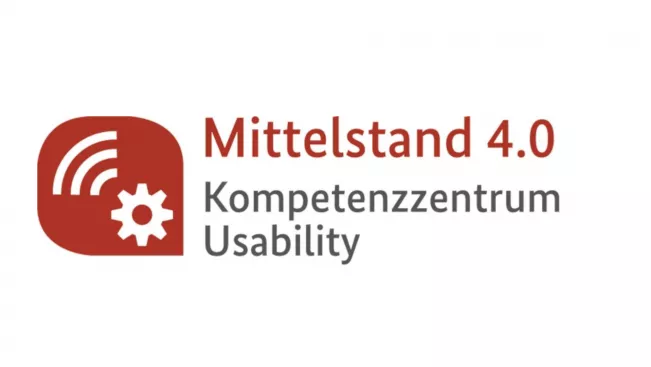Research at the university
Research Database: Projects
Forschungsprojekte (191)
The institute TREE operates the TREE-Energy Lab (TRE3L) in the university's Center of Applied Research (ZAF) with it's industrial partners GKN Driveline and GKN Sinter Metals. In the three sub-labs Powder Fabrication-Lab, Mobility-Lab and Hydrogen-Lab the three partners work on innovative techniques in powder metallurgy and recent topics of environment friendly mobility and energy-efficiency. These labs are supported by a Simulation-Lab.
Project management at the H-BRS
Prof. Dr Alexander Asteroth Prof. Dr Tanja Clees Prof. Dr Dirk ReithSub-project of proposal: „HACS – Hierarchical Methods for the Efficient Analysis of Cloud-Based Simulation Data“ The steady growth in size and complexity of simulation data, as well as the way it is postprocessed, in many situations does not comply with the requirements of efficient visual analysis. This becomes obvious when data from very large simulations of, e.g., airflow around vehicles, is maintained at an automobile manufacturer‘s headquarters, and engineers at remote locations are working with the data in a loop of visual analysis and model modification. Todays visualization processes like remote visualization or the bulk transmission of all data before visualization do not scale with data growth and increasing numbers of concurrent users. This project aims at developing novel data Teilprojekt im Antrag: „HACS – Hierarchical Methods for the Efficient Analysis of Cloud-Based Simulation Data“representation and transfer methods to integrate into a new visualization pipeline, which will be capable of handling and visualizing efficiently increasing magnitudes of remote data. To these ends, hierarchical compression of irregular grids is combined with progressive on-demand data transmission and local volume rendering of tetrahedral multiresolution meshes. The interface to the data is provided as a generic layer that models general graphs and grids, which enables zero-overhead integration with distributed caching services as well as existing simulation and visualization systems.
Project management at the H-BRS
Prof. Dr André HinkenjannAs part of the NRW-Ghana Partnership and the funding programme "NRW Partnerships for the Promotion of Technical Universities in Ghana", the Ministry of Innovation, Economics and Research (MIWF) has been funding the university partnership project "Partnership for Applied Sciences - PASS" between Hochschule Bonn-Rhein-Sieg University of Applied Sciences (consortium leader), Cologne University of Applied Sciences, Bad Honnef International University of Applied Sciences and the two Ghanaian universities Kumasi Technical University and Cape Coast Technical University through the German Academic Exchange Service (DAAD) since 2017. The project has a duration of four years.
The enormous sensitivity of modern DNA analytical techniques entails a high risk of picking up DNA traces from individuals not involved in the crime case investigated. Resulting mixed DNA profiles are difficult to be assigned to perpetrators. In rape cases, sperms of several rapists, or a high proportion of victim DNA may lead to mixed traces as well. To avoid such problems and at the same time to further increase the analytical sensitivity, we propose to analyze traces that eo ipso represent individual genomes. These comprise single sperm cells, single skin flakes, and single telogen hairs. DNA extraction protocols will be optimized for these trace types, and their minute amounts of DNA will be preamplified using whole genome amplification (WGA) techniques. The WGA products will be subjected to conventional forensic DNA analysis thereafter. By this means, hitherto problematic trace types will be made amenable to forensic DNA analysis. Publikations Theunissen, G.M.G., Gibb, A., Kong Thoo Lin.P., Rolf, B., Forat., S. & Jäger, R. (2021) DNA profiling of single sperm cells after whole genome amplification. Forensic Sci Int: Reports 4: 100240. Heß, S.A., Trapani, S., Boronat, M.d.M., Theunissen, G.M.G., Rolf, B. & Jäger, R. (2021) Ribosomal DNA as target for the assessment of DNA degradation of human and canine DNA. Legal Med. 48: 101819. Heß, S.A., Biermann, J.-P., Grabmüller, M., Madea, B., Thiele, R. & Jäger, R. (2019) Evaluation of STR profiles of single telogen hairs using probabilistic methods. Forensic Sci Int: Genetics Suppl. 7: e454-e456. Theunissen, G.M.G., Rolf, B., Gibb, A. & Jäger, R. (2017) DNA profiling of sperm cells by using micromanipulation and whole genome amplification. Forensic Sci Int: Genetics Suppl. 6: e497-e499.
The analysis of the microscopic distribution of compounds can help solving various analytical problems, many of which are relevant to safety and security. Ideally, the identification of compounds should be accomplished in a precise and quick way and leave the compounds undamaged. Infrared and Raman spectroscopy are complementary methods that are based on the distinct interactions of molecules with visible or infrared light. In the course of the project a coupled microscopic-spectroscopic platform was set up that allows for the analysis of spatially resolved dispersive and FT-Raman spectra, as well as FT IR spectra and IR microscopy. The ability to detect the distribution of smallest and particle-bound analytes will support and promote existing and novel R&D activities of several research groups.
Project management at the H-BRS
Prof. Dr Richard Jäger Prof. Dr Peter-Michael KaulDie Hochschule Bonn-Rhein-Sieg - einfach ausgezeichnet. Studieren Sie bei uns! Es erwartet Sie ein praxisorientiertes Studium auf der Basis aktueller Forschungsergebnisse.
Smart cities offer a unique opportunity to demonstrate the benefits of using a variety of robotic applications in different living contexts for all European citizens. SciRoc will call for leading European robotics developers from European companies and research labs to send teams to demonstrate their technologies and systems in high profile competitive demonstrations in a smart city environment. SciRoc continues to build the European Robotics League; raising interest through public engagement, validating and disseminating new benchmarks, and accelerating development through demonstrating the performance of components and techniques against these benchmarks. Setting competitions based on these benchmarks in the Smart City context drives development towards real societal needs. SciRoc will offer companies as well as researchers a unique opportunity to demonstrate their systems and technology to a wide public audience in a realistic and believable context, and will foster an informed, fact-based communication about robotics and its societal implications with public stakeholders and the media. The synergy between smart robots and smart cities adds value to both, and showcases the technologies which will shape our living spaces in the near future.
The SME 4.0 Usability Competence Centre supports small and medium-sized enterprises in designing digital technologies in such a way that they can be used easily and experienced positively. The design of digital products and services requires optimised usability (U) and a positive user experience (UX). If suitable UUX methods are applied, this leads to higher productivity, greater customer satisfaction and increasing user enthusiasm.
Project management at the H-BRS
Dr Daryoush Daniel VaziriAims The objective of the SelfOG project is a systematic analysis of the relative contributions of visual and gravity based information to the perception of orientation (where is up?). The perception of the perceptual upright (PU) varies in dependency of the weighting of different gravity and body based attributes, between contexts and depending on individual differences. Once we get a better understanding of this perception process, we will be able to develop mechanisms helping us to prevent accidents in special environments (like space or underwater) in the future. The same is true for the situation of elderly people, who sometimes suffer from lack of orientation which often leads to downfall.
The fingerprint in the passport or the identification at the entrance, for example in security zones of buildings, since long have become the target of criminals - the aim is to pretend a false identity or to conceal one's own identity: Evidence includes skin transplants, stickers with the imprint of other persons or the removal of the visible lines of the skin relief. Advanced methods are therefore needed to identify people quickly and reliably. The optical coherence tomography (OCT) method, which originated in medicine, promises greater reliability: In the "3D Finger" project, it is to be used in a new type of OCT fingerprint scanner. This opto-electronic process provides additional biometric information for the secure identification of a person and reliably prevents attempts to fool the system. This is made possible by being able to image much finer structures located deeper in the skin. If the system is suitably designed, sweat glands, for example, are imaged, but also whether the structure of the superimposed skin layers - epidermis, dermis and subcutis - match. This is like a second, "internal" fingerprint. Even blood flow can potentially be included to detect fakes with foreign fingerprints on dead carrier material. With the BMBF-funded project "3D-Finger", the Institute for Safety and Security Research (ISF) at the Bonn-Rhein-Sieg University of Applied Sciences aims to achieve automatic evaluation of these biometric features in the registration and authentication of persons. The aim is to improve access controls for critical infrastructure, airports, when crossing borders or at major events by means of automatic access control systems in such a way that even the rush of large crowds can be handled sufficiently quickly and secured against so called "spoofing attacks" - formally specified as Presentatation Attacks according to ISO/IEC 30107.
Contact Points
Centre for Science and Technology Transfer (ZWT)
Room
F 405
Vice President Research and Young Academics
Campus
Sankt Augustin

